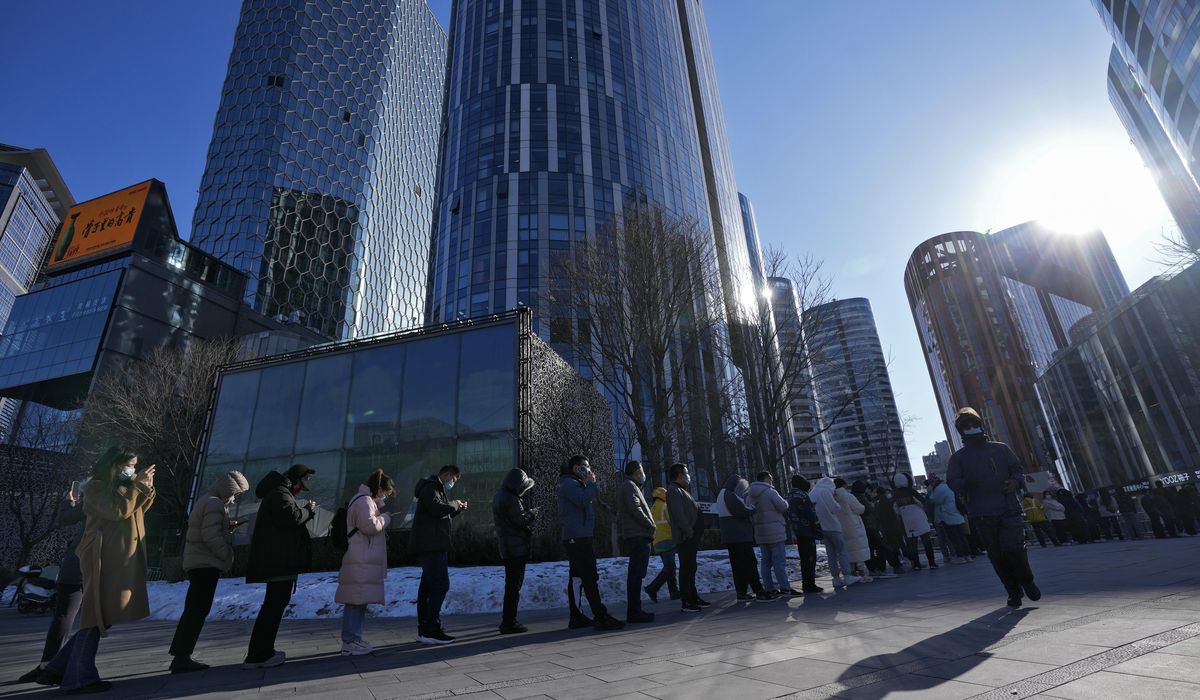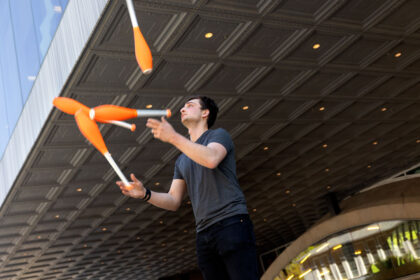
Sudden lockdowns that trap whole neighborhoods in their homes. A testing regimen that requires millions to get swabbed in a single weekend. And a bizarre request for Hong Kong pet lovers to turn in their hamsters after a mini-outbreak at a pet store.
Bucking the approach in much of the rest of the world, China is deploying a “zero-COVID” approach to the pandemic that reflects Beijing’s authoritarian instincts but may be unsustainable.
Ordinary citizens — and entire megacities — suffer from the hardships of constant virus surveillance and quarantining. At the same time, scientists wonder whether the Chinese will have enough natural immunity and antibodies from domestic vaccines to keep up with variants that have repeatedly spun off from the coronavirus discovered in Wuhan two years ago.
Although Europe and the U.S. have reported higher death totals than China, Western nations have learned hard lessons about living with the virus as nations consider a pivot to an endemic phase in which COVID-19 is managed as another respiratory disease.
China’s draconian policy is under a global microscope as its communist leaders prepare to stage the Winter Olympic Games in Beijing starting Friday while trying to prevent any major outbreaks of the highly contagious omicron variant.
“The zero COVID policy has never made sense, and the Chinese clinging to it in the midst of omicron will be futile,” said Amesh Adalja, a senior scholar at the Johns Hopkins Center for Health Security. “Zero-COVID is not a sustainable approach to a virus that was always destined for endemicity and could potentially be dangerous as it may have left a zero-COVID country’s population with little immunity and no ability to risk-calculate.”
He said, “It is not surprising that such a policy is still in place in an authoritarian communist country in which the population is used to such measures.”
Beijing is shutting down housing complexes as COVID-19 pops up in greater numbers on the cusp of the Olympics while athletes, workers and journalists will be completely cut off from the local population for the two-week extravaganza.
Authorities detected more than 20 cases of COVID-19 over the weekend, bringing the total infections from its latest outbreak to over 100, according to the South China Morning Post.
Residents within housing compounds in the Fengtai and Anzhenli neighborhoods of Beijing‘s Chaoyang district are not allowed to leave their homes. They will be tested daily after the recent uptick in local cases.
The Xiong’an New Area, home to 1.2 million people southwest of Beijing, was quietly locked down a few days ago, raising eyebrows about the extent authorities will go to try to stiff-arm the virus.
Reported COVID-19 case totals would be enviable elsewhere in the world, but China’s government has shown no tolerance for any cases since the start of the pandemic. It imposed the first set of lockdowns on Wuhan in January 2020 and stuck to the model as other countries used lighter economic restrictions or moved on to hoping vaccines, treatments and masking would keep the virus in check.
A woman identified as Ms. Wang posted on the Chinese social media giant WeChat this month that she went on a blind date and got stuck at the man’s house because his community in Zhengzhou went into a sudden lockdown. It was unclear how many days she spent there, but he was reportedly a good cook.
Other accounts have been heart-wrenching, including videos that show children entering hospital isolation without their parents.
Xian, a city of 13 million known for its ancient Terracotta Army sculptures, recently started to lift strict COVID-19 restrictions that were in place for three weeks.
An account on the Chinese social media platform Weibo reported on a pregnant woman who miscarried outside a hospital after she was refused entry because she didn’t present a virus test. The report generated outrage over the severe restrictions. Officials apologized for negligence at the hospital and blamed an “insufficient” emergency plan for triaging patients, according to NBC News.
Hong Kong, meanwhile, recently allowed pet shops to begin selling hamsters and other small animals after a campaign to cull over 2,000 of the pets because of a small outbreak of the virus at one shop. Outsiders were outraged and offered to adopt the pets.
“The reporting from China is very limited, but you get these fragmentary reports [that] the population is getting restive and very concerned,” said William Schaffner, an infectious disease expert at Vanderbilt University. “How long can they sustain this, not only from a public health perspective but from a social, political and economic perspective? They’re hanging in so far.”
Vaccine questions
China has administered 1.27 billion doses of its home-developed vaccines, resulting in 85% of the population becoming fully vaccinated, according to Our World in Data, an online tracker. But studies suggest Sinovac, a prominent Chinese vaccine that uses an inactivated virus, is not very effective against omicron, raising questions about the country’s ability to stiff-arm the fast-moving variant for posterity.
Former Food and Drug Commissioner Scott Gottlieb told CNBC this month that Chinese authorities were playing a futile game of whack-a-mole in trying to snuff out and contain even the most minor outbreaks. Unlike in other major countries, China’s population isn’t building up the natural defenses needed to curb COVID-19 in the long run.
“Outside of Wuhan, the prevalence is very low, so there is not a lot of immunity in the population,” Mr. Gottlieb said. “And they’ve deployed vaccines that have been far less effective against omicron.”
Beijing’s most pressing priority is holding a virus-free Olympics, where athletes, workers and journalists will be cut off from the rest of the city.
The process starts at the airport and includes high-speed rail to get participants to venues. In short, no one outside the bubble gets in and no one inside the bubble can exit.
The South China Morning Post said organizers detected 37 infections among athletes at the airport or the Olympics’ home base, or “bubble,” over the weekend, bringing the total to 176 since Jan. 23. The infections raised questions about whether the closed system will work or whether it will protect locals but not those inside the bubble.
Beijing limited tickets to domestic spectators and in January further restricted audiences to those who were invited to be on-site. In one sign of the drastic measures, authorities told locals not to help anyone in a car accident within Olympics-only lanes of highways.
Athletes will be tested daily with sensitive PCR tests, which can detect remnants of the virus after a person is no longer infectious, raising questions about whether some competitors will be frozen out of the competition for no good reason.
In an extension of the stifling atmosphere, authorities told foreign athletes not to protest its treatment of ethnic minorities. Officials recently said athletes who protest could be “subject to certain punishment.”
Asked about potential threats, White House press secretary Jen Psaki said Monday, “I think we spoke to this last summer and conveyed a support for freedom of speech for individuals.”
The Biden administration has announced a diplomatic boycott of the Games, allowing American athletes to compete but sending no official government representatives to watch them. A handful of other countries, including Britain, Canada and Australia, have followed suit.
China’s nationalistic state media, meanwhile, argue that criticism of its approach to the Olympics and virus control reflects a “sour grapes” mentality in the West, which has struggled with far higher death totals during a pandemic that originated in China.
“Slander against China’s dynamic zero-COVID policy from some countries in the West, especially the U.S., is unconvincing,” a Global Times opinion piece said Monday. “In the face of the pandemic, some countries in the West have already laid down arms, and are unqualified in assigning blame and pointing fingers at China regarding China’s rational anti-epidemic efforts, which actually have been proven to be more effective in curbing the spread of the virus.”
After the Olympics, Chinese authorities will have to consider how and when to relax border controls and limits on movement throughout the country, particularly if the virus finds a way to attack cities that haven’t had much prior infection.
“I guess that’s the question — could there be in China waves of infection that come later than the rest of the world simply because they’ve been delayed and this virus will not be denied?” Dr. Schaffner said. “The impact will be not only on the Chinese population but the rest of the world because they could be variant generators.”
For more information, visit The Washington Times COVID-19 resource page.








